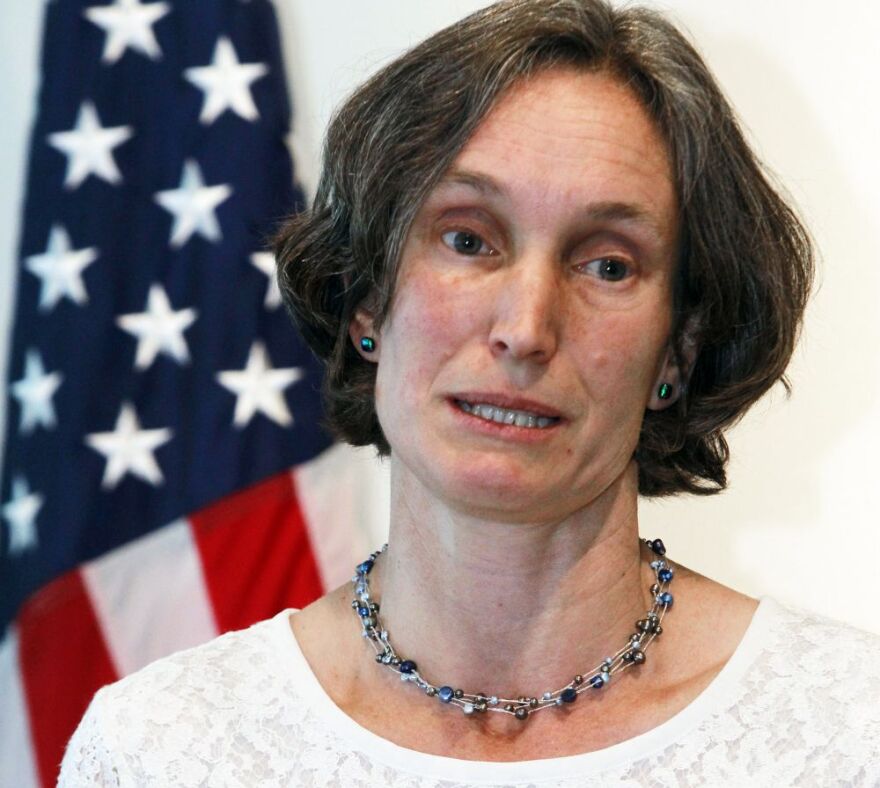All but eight of Vermont’s public schools have been considered “low performing” under the federal No Child Left Behind law.
That’s because if only one child does not score as proficient, a school is considered low performing under the standard.
But Vermont Education Secretary Rebecca Holcombe disputes that label. In a memo to parents recently, she said that the Vermont Agency of Education does not agree with the federal policy.
The eight schools that are not low performing did not take the NECAP tests and instead decided to participate in a pilot program of a new test so they had their rating frozen at last year’s level. Every Vermont school where students took the NECAP test is considered low performing.
“It’s a broken policy that doesn’t give our teachers, and our schools and our communities, the information they need to actually improve learning. To be blunt we’re sort of all in detention. And when you’re all in detention, you have to ask if there’s something wrong with the way the rules are set up,” Holcombe said. “It’s just not a useful tool at this point. What it does do is creates rhetoric or a narrative of failure, that really makes people feel bad without giving them direction and guidance that they can use to get better.”
“Test scores are a proxy for learning, but there are not real learning themselves.” Holcombe said we lose sight of the real gain, which is to improve reading, reasoning, problem solving, and mathematics and teaching to the test doesn’t set students up to be successful down the road. “There’s so much that we learn in schools that’s hard to capture on an assessment.”
Most other states have gotten waivers to get out from under No Child Left Behind. Vermont hasn’t pursued a wavier because the state would have to agree to use test scores for the evaluation of teachers. Holcombe said that because of Vermont’s small class size, these evaluation models won’t work well. She said one study of those measures threw out all scores for class sizes under 15 students, because the performance reviews can be too easily skewed. 40-50 percent of Vermont’s classrooms have fewer than 15 students.
“I think we need to look at a rich portfolio of data. I think we need to look at test scores, look at performance assessments. I’d love us to look at survey data from students and teachers and parents about the engagement of students and how safe they feel at schools and whether they feel they have opportunities for self-directed learning. I think we need to have educators visiting other school sites and observing classrooms and learning from other educators,” Holcombe said. “So I’m a big believer in lots of data, but I think the data should inform judgments about how you make improvements in teaching, and that there’s danger in tying automatic consequential decisions to a single measure, especially if you know that that measure may not be technically up to the job, as I don’t think those measures are in the case of Vermont.”
Schools that are newly identified as low performing will now have to develop a continuous improvement plan, which looks at a broad set of measures and data, and then describe and document a plan to improve those outcomes.
But what can schools do to help the students who do not meet the proficient standards? Those students often have other challenges, such as poverty.
Holcombe said the first step is universal pre-kindergarten, as that’s where the achievement gap begins.
“By age two there’s already a six month gap in verbal learning skills in children who come from low income and high income backgrounds. So critical to turning around opportunities for children who are growing up in poverty is finding ways to partner with parents as the first teachers of their children and help them provide more support, better enrichment and learning in the home. To make sure every child has access to nutrition and health care, so that the gaps that we see when they come to school and when they come to preschool aren’t so profound,” Holcombe said. “So I think a prime example of how we can begin to really address the outcomes is to target things like early childhood and also extend it to after school programing and summer programing for students who don’t have access to for example, camp and Lego robotics and so forth during the summer.”







